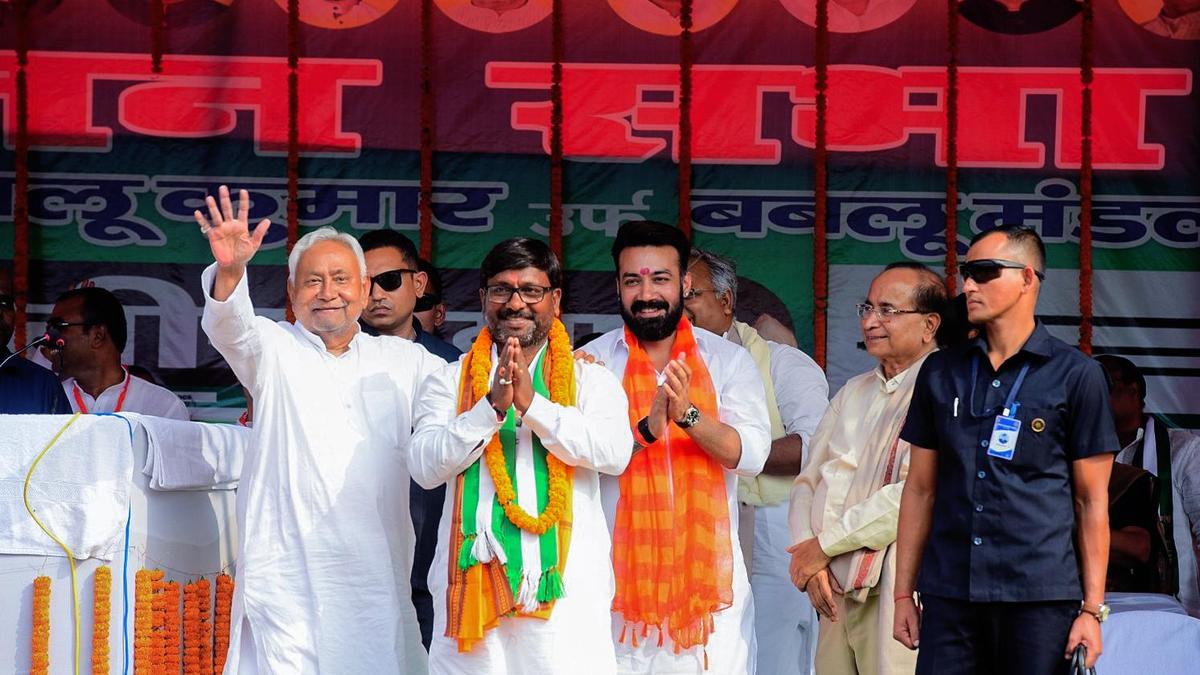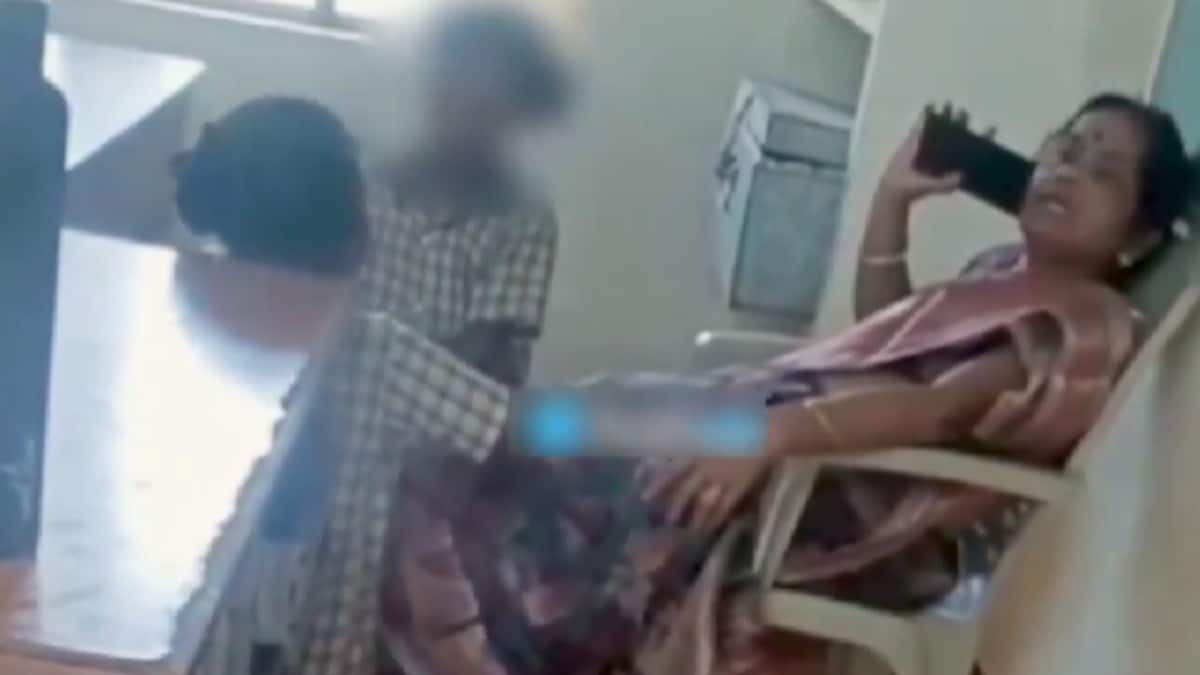The Delhi government’s attempt to induce rain through cloud-seeding trials on October 23 and 29 has revived memories of similar operations in Tamil Nadu over the last 50 years.
As it happened in the latest case, the exercise even then was met with a modest response. The basic difference between the present and the past experiments was that while the southern State was desperately in need of water to meet its drinking water and farming requirements, Delhi tried its luck with the trials to address the problem of pollution.

In January 1970, P. Koteswaram, Director General (DG) of the India Meteorological Department (IMD), (the post then called Director General of Observatories), dropped the first hint of experiments in artificial rain-making, for which he would hold discussion with the Tamil Nadu government. Koteswaram, who received Padma Bhushan (1975) and was the first Indian to be elected as Vice-President of World Meteorological Organisation during 1971-1975, referred to the successful trials in Delhi, Agra and Jaipur areas in the previous 10 years by seeding clouds with salt injected from generators on the ground.
Earlier, a report in The Hindu dated August 18, 1968 said, the Union Ministry of Food and Agriculture in consultation with the Council of Scientific and Industrial Research and the IMD had prepared a five-year scheme to conduct experiments on an intensive scale, using aircraft in a suitable region. The report said the experiments, showed an increase in rainfall by about 20% in the targeted areas which included, Munnar (Kerala) and Tiruchi (TN).
As the early 1970s were not that kind to Tamil Nadu in terms of rainfall, the government showed a keen interest in the concept of artificial rain. The Indian Institute of Tropical Meteorology (IITM) did trials in and around Tiruvallur for three months from July 1973. But Koteswaram went on record saying no definite conclusion was arrived that the rain that occurred was due to the seeding of the clouds in view of “insufficient number of observations and some practical difficulties,” this newspaper reported on May 11, 1974.
In the meantime, the Union government, at the behest of the Tamil Nadu government, had approached a Canadian firm in Mumbai for taking up a project to induce rain from monsoon clouds over Chennai and the Nilgiris. Giving details to this daily on April 30, 1975, the then Chief Secretary of Tamil Nadu, P. Sabananayagam, put the estimated cost of the project at ₹1 crore including the foreign exchange component of ₹ 80 lakh.

About two months later, news was out that the artificial experiments would commence shortly over the catchment areas of water sources of Chennai and the hydel areas of the Nilgiris district. The operation would begin after July 12 and continue till mid-November. A three-member team of Americans, consisting of a ground engineer, a pilot and a meteorologist, “would spot the rain-bearing clouds with the help of the radar equipment on the ground, fly over the clouds, seed them with chemicals and make them shed the rain in the catchment areas,” stated a report in The Hindu on July 8, 1975. It added the Americans had conducted similar operations in their country and in Africa. The project cost was cut to ₹ 12 lakh, including ₹ 10 lakh in foreign exchange for which the Union government had given the clearance.
After the launch of the operations, the catchment areas received rainfall. For instance, Poondi recorded 3.7 cm on July 21. K. Chockalingam, then Special Secretary in the State Agriculture department, sounded cautious about the one-to-one relationship about the experiments and the rainfall, while saying the stretch between Poondi and Red Hills too got rain. After completing the first leg of operations on July 29, Fred Clarke, engineer-member of the American team, claimed about 20% more precipitation occurred because of the seeding. Chockalingam stated there had been some inflow subsequently into the Satyamurti Sagar in Poondi.
In an interaction with journalists in Pune a week later, Y.P. Rao, IMD’s DG, disapproved the claims that “the artificial rain-making experiment was successful immediately after a single flying into the clouds”. Writing an editorial, The Hindu, on August 13, 1975, stated that “in his (Rao’s) view, such instant evaluation is not possible and scientific tests must be carried out over a fairly long period before any verdict on the experiment can be pronounced. Yet the issue involved in the Madras [now Chennai] experiment relates primarily to giving relief to a water-starved place by some means or the other.”
A fortnight before the dismissal of his government in January 1976, the then Chief Minister M. Karunanidhi, explained to journalists about the failure of northeast monsoon in the composite districts of Madurai, Ramanathapuram and Tirunelveli districts. The State government was contemplating approaching the American company for cloud seeding operations over the districts.
Again, in the early 1980s, the spell of drought hit the State, especially Madras and surrounding areas. This time, the regime was headed by M.G. Ramachandran with Chockalingam as the Chief Secretary. In July 1983, the operation was carried out by a four-member American team, led by Thomas Henderson. A “moderate rainfall” was recorded by Poondi. The experiments went on till October, at the completion of which the State government said the exercise had cost ₹26 lakh, according to a report of this newspaper on November 18, 1983. Eight months later, the government sanctioned ₹62 lakh for cloud-seeding operations [which began in July 1984] over the city’s reservoirs. As the situation was grim, the authorities went to the extent of enlisting the services of the violin exponent Kunnakudi Vaidyanathan, who filled the air on the shores of Red Hills tank with the strains of Amritavarshini [a raga said to have been composed by Muthuswami Dikshithar], imploring the rain gods to respond.
The State government’s purchase of an aircraft in 1983 for the purpose came in for criticism of the Comptroller and Auditor General, whose report was tabled on the floor of the Assembly in November 1987. “The State Government not only did not adopt the usual tender procedure but also paid a price far in excess of the one suggested by Hindustan Aeronautics Limited (HAL) which inspected the second-hand aircraft,” reported this newspaper on November 10, 1987. Six years later, another report stated that “the aircraft remained idle for want of spares for sometime and had to be sent for mandatory overhauling at HAL at a cost of nearly ₹13 lakh and finally had to be disposed of.”
In 1993, when Chennai was in the grip of yet another spell of water shortage, the trials were done were done. But, by then, a consensus had emerged among the scientific community that no area got any more than 20% of rainfall over and above the normal. Ten years later, the then Chief Minister Jayalalithaa made an announcement but the authorities did not translate her decision into action in view of the absence of “conducive conditions.”

The addition of Krishna water and Veeranam tank as sources to Chennai water supply coupled with many seawater desalination plants has made the city’s water supply position far better than what it was in the past, rendering cloud-seeding operations out of anyone’s thought even as an option to tackle the shortage of drinking water.
As the situation was grim, the authorities went to the extent of enlisting the services of the violin exponent Kunnakudi Vaidyanathan, who filled the air on the shores of Red Hills tank with the strains of Amritavarshini [a raga said to have been composed by Muthuswami Dikshithar, a member of the Trinity of Carnatic music], imploring the rain gods to respond.

 2 hours ago
6
2 hours ago
6









 English (US) ·
English (US) ·